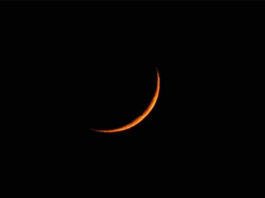China sent three astronauts to its Tiangong space station on Tuesday. This is the first time a civilian has been put into orbit. China plans to send a crewed mission to the Moon by 2030. The country has invested billions of dollars in its military-run space programme to catch up with the United States and Russia.
The Shenzhou-16 crew took off atop a Long March 2F rocket from the Jiuquan Satellite Launch Centre in northwest China at 9:31 am (0131 GMT). They docked at the space station’s Tianhe core module on Tuesday afternoon, more than six hours after taking off.
The launch was a “complete success” and the “astronauts are in good condition”, said Zou Lipeng, director of the Jiuquan Satellite Launch Center. Dozens of employees from the space programme attended the launch, snapping selfies with the rocket in the background. Children played as they waited for the launch, some waving Chinese flags as they sat on their parents’ shoulders.
Leading its crew is commander Jing Haipeng on his fourth mission, as well as engineer Zhu Yangzhu and Beihang University professor Gui Haichao, the first Chinese civilian in space.
Shenzhou-16’s crew will carry out a number of experiments during the mission, including in “high-precision space time-frequency systems”, general relativity, and into the origin of life. The space station was resupplied with drinking water, clothing, food and propellant this month in preparation for Shenzhou-16’s arrival.
China’s “space dream” has been put into overdrive under President Xi Jinping, and the construction of a moon base is planned. The final module of Tiangong successfully docked with the core structure last year. Tiangong carries several pieces of cutting-edge scientific equipment, including “the world’s first space-based cold atomic clock system”. It is constantly crewed by rotating teams of three astronauts.
China has been effectively excluded from the International Space Station since 2011, pushing Beijing to develop its own orbital outpost. China’s space agency reiterated on Monday it is actively seeking international cooperation in the project.
China plans to send two crewed space missions to Tiangong every year, according to the CMSA. The next will be Shenzhou-17, with an expected launch in October.














